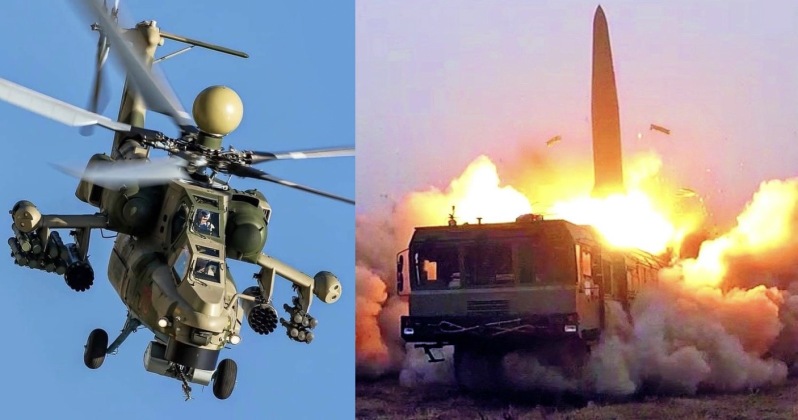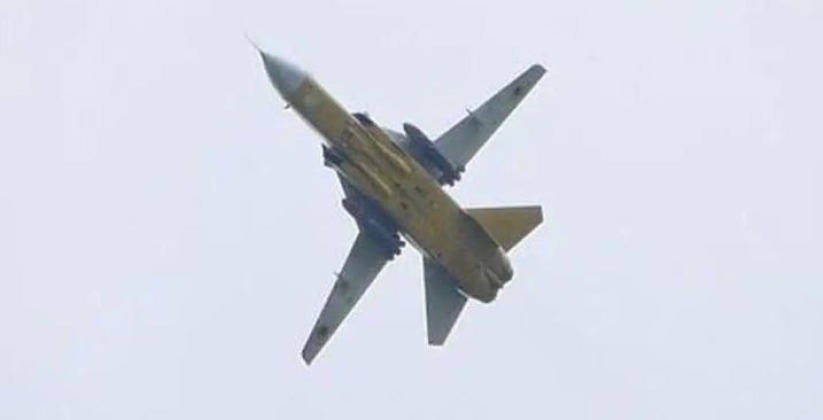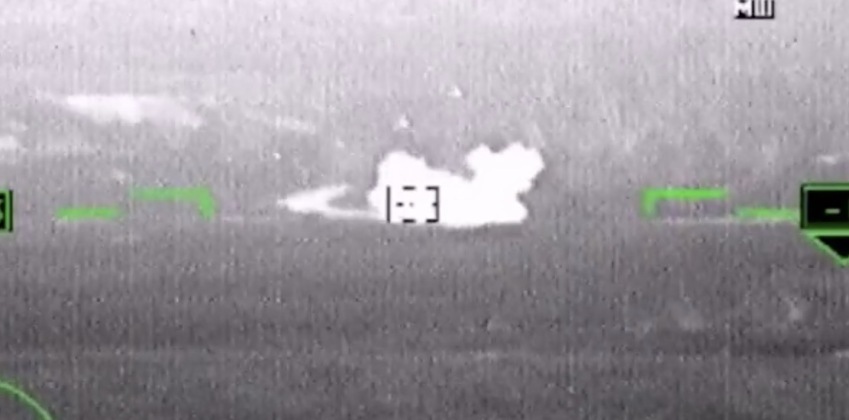Military Watch:
Russian Forces Destroy Storm Shadow Missile Depot and Electronic Intel. Centre: Attack Helicopters Target Ukraine’s Mech Brigades
June-25th-2023

Mi-28 Attack Helicopter and Iskander Missile
On June 23 an unknown batch of the Russian Military neutralised a warehouse storing British supplied cruise missiles in Ukraine, which began deliveries in May and quickly began to be used for precision strike on targets far behind Russian lines. The Russian Defence Ministry reported the following day regarding the strikes: "On June 23, a warehouse with Storm Shadow cruise missiles was destroyed at a Ukrainian airbase near the village of Starokostyantyniv, Khmelnytskyi region, in response to a strike on a road bridge over the Chongar Strait.”
On June 23 an unknown batch of the Russian Military neutralised a warehouse storing British supplied cruise missiles in Ukraine, which began deliveries in May and quickly began to be used for precision strike on targets far behind Russian lines. The Russian Defence Ministry reported the following day regarding the strikes: "On June 23, a warehouse with Storm Shadow cruise missiles was destroyed at a Ukrainian airbase near the village of Starokostyantyniv, Khmelnytskyi region, in response to a strike on a road bridge over the Chongar Strait.”
Storm Shadows have been integrated onto Ukrainian Su-24M strike fighters and Su-27 air superiority fighters, which it inherited from the Soviet Union, allowing them to engage targets across much of Russian held territory while remaining far inside Western Ukraine where dangers from Russian air defences and fighters are much more limited.
The British missiles have been used to strike industrial targets, bridges, and to kill Chief of Staff of the 35th Combined Arms Army Major General Sergey Goryachev, with their use facilitated by the massive presence of Western intelligence personnel on the ground and the support from hundreds of NATO satellites which the Ukrainian war effort has received.
While in a full scale war with NATO such missiles are expected to have a more limited utility due to likely Russian targeting of key satellite assets, in a limited conflict they are able to operate at their full potential.
Destroying the costly and relatively scarce missiles in their warehouses provides an alternative solution, although Russian air defences have reportedly also had some successes intercepting them. The French version of the Storm Shadow developed as part of a joint program, the SCALP-EG, is expected to also begin deliveries to Ukraine this year, while German is considered likely to deliver its Taurus cruise missiles which have an expanded penetrative capacity against fortifications.


Ukrainian Air Force Su-24M with Storm Shadow Cruise Missiles
Alongside successful destruction of a Storm Shadow missile depot, the Russian Air Force on June 23 also neutralised Ukrainian electronic intelligence centres at the Kanatovo and Dnepr airfields, with aircraft of unknown designation also targeted and reportedly destroyed.
Alongside successful destruction of a Storm Shadow missile depot, the Russian Air Force on June 23 also neutralised Ukrainian electronic intelligence centres at the Kanatovo and Dnepr airfields, with aircraft of unknown designation also targeted and reportedly destroyed.
The Russian Defence Ministry reported the following day regarding the strikes: "Last night, the Russian Aerospace Forces delivered a multiple strike by long-range precision weapons against electronic intelligence centres and aircraft of the Ukrainian Air Force at the airfields Kanatovo in the Kirovorgrad Region and also Dnepr. The goal of the strike was achieved.”
Although Russia has targeted airfields since the outbreak of the conflict, Ukraine has retained the ability to operate its combat aviation to the surprise of analysts from both sides. This includes not only MiG-29 fighters, which were developed in the Soviet Union to be able to use makeshift airfields with minimal maintenance, but also heavyweight aircraft such as the Su-24M and Su-27 which, although increasingly limited in numbers due to combat losses, have continued to fly and carry a growing range of new NATO supplied ordinance such as AGM-88 HARM anti radiation missiles.


Ukrainian MiG-29 After Early Missile Strike on Airbase
Successful strikes on key targets related to Ukraine’s air campaign coincide with continued use of rotary wing aviation to take a serious toll on Ukrainian mechanised brigades, as the country continues to use its fleet of thousands of Western supplied tanks, infantry fighting vehicles and other armour to launch assaults on Russian positions.
Successful strikes on key targets related to Ukraine’s air campaign coincide with continued use of rotary wing aviation to take a serious toll on Ukrainian mechanised brigades, as the country continues to use its fleet of thousands of Western supplied tanks, infantry fighting vehicles and other armour to launch assaults on Russian positions.
Following the emergence of images and footage widely showing Western supplied armour taking major losses, including top end new hardware such as M2 Bradley fighting vehicles and Leopard 2A6 tanks, Russian and Western sources have widely conceded that Russian attack helicopters have taken a major toll.
Russia’s Battlegroup West spokesman Sergey Zybinsky reported on June 25 regarding some of the recent strikes on Ukrainian ground forces: "In combat in the Kupyansk area, the crews of Ka-52 and Mi-28 assault helicopters and Su-25 fighters of the Battlegroup West carried out 11 air strikes on nine areas where manpower, weapons, military and special equipment and personnel of [Ukraine’s] 14th Separate Mechanized Brigade and the 103rd Separate Territorial Defence Brigade were amassed.”


June Footage From Russian Ka-52 of Strikes on Ukrainian Armour
Zybinsky added that "The group’s artillery thwarted four attempts by the Ukrainian military to rotate troops at forward positions near the settlements of Dvurechnoye, Sinkovka and Novosyolovskoye.”
Zybinsky added that "The group’s artillery thwarted four attempts by the Ukrainian military to rotate troops at forward positions near the settlements of Dvurechnoye, Sinkovka and Novosyolovskoye.”
The Mi-28 and Ka-52 are some of the newest attack helicopter designs operational anywhere in the world, and were successors to the late Soviet era Mi-24 which is considered a broad equivalent to the top NATO attack helicopter the AH-64 Apache. While the United States has moved to modernise the Apache rather than developing a new attack helicopter class, Russia invested heavily in developing two 21st century new designs which have distinct advantages in their capabilities compared to equivalents fielded elsewhere in the world. This contrasts to other fields such as fighter aviation where the country is seen to have fallen behind since the end of the Soviet era.
The Ka-52 has made extensive use of the new Vikhr-1 anti armour missile for its strikes on Ukrainian armour, with footage of major attacks on armoured columns having been published multiple times since the beginning of June.
Russia has wasted a lot of missiles destroying wooden decoy missiles.
ReplyDeleteWakakakaka…
DeleteIndeed & soon the Ukrainian nationalists & its cohorts would be fighting the war with wooden decoys!
Military Watch dare not utter a single pathetic squeak about the armed rebellion against Puting
ReplyDeleteSame with Ah Mok
Armed rebellion against Putin?
DeleteWakakakaka…
Did u read that in yr wet dream about Prigozhin wagner's failed mutiny?
Read AGAIN, mfer!